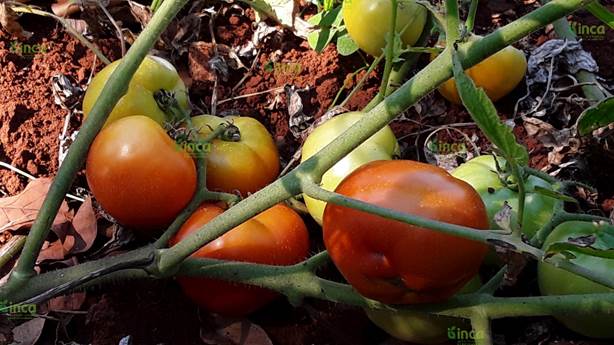My SciELO
Services on Demand
Journal
Article
Indicators
-
 Cited by SciELO
Cited by SciELO
Related links
-
 Similars in
SciELO
Similars in
SciELO
Share
Cultivos Tropicales
Print version ISSN 0258-5936On-line version ISSN 1819-4087
cultrop vol.42 no.2 La Habana Apr.-June 2021 Epub June 30, 2021
Report of new cultivar
‘Yessi’ new tomato cultivar resistant to begomoviruses
1Instituto Nacional de Ciencias Agrícolas (INCA), carretera San José-Tapaste, km 3½, Gaveta Postal 1, San José de las Lajas, Mayabeque, Cuba. CP 32 700
2Centro Nacional de Sanidad Agropecuaria (CENSA), carretera de Jamaica y Autopista Nacional. Apartado 10, San José de las Lajas, Mayabeque, Cuba
‘Yessi’is a tomato cultivar obtained by hybridization at the National Institute of Agricultural Sciences (INCA). This cultivar is resistant to begomovirus with the highest incidence in the country and tolerant to fungal diseases, such as alternariosis. It has adaptation to the Cuban tropical climate for open pit plantings, during the opening and closing of the campaign, high productive potential and adequate quality for fresh consumption.
Key words: Plant breeding; Solanum lycopersicum; disease resistance; hybridization
INTRODUCTION
In Cuba, begomoviruses are among the main pests that affect tomato yields (Solanum lycopersicum L.). That is why the Genetic Breeding Programs of the crop are aimed at obtaining cultivars adapted to tropical climate conditions and resistant to the main disease that affects yields caused by the Tomato Yellow Leaf Curl Virus (TYLCV-IL [CU] begomovirus). Cultivars with these characteristics guarantee seed greater availability, as well as flexibility in sowing and harvesting dates in the crop, which is why ‘Yessi’ cultivar was obtained to incorporate it into the country's varietal strategy.
Origin and cultivar description
‘Yessi’ cultivar is originated by crossing between the commercial cultivar ‘Mariela’ (INCA), susceptible to TYLCV, tolerant to fungal diseases such as alternariosis and with adaptation to the Cuban tropical climate, and ‘Vyta’, a cultivar obtained at the Institute of horticultural research “Liliana Dimitrova” (IIHLD) and that is resistant to TYLCV-IL [CU] too. The work of obtaining the new cultivar was carried out at INCA on leached red Ferrallitic soil during 2007-2018 period. From the segregating generation F2 derived from this cross, the selection method “descendants of a single seed” modified was applied to one fruit per plant. The F7 lines were evaluated for resistance to TYLCV-IL [CU], a Cuban isolate of TYLCV, by this begomovirus artificial inoculation, using its natural vector, the whitefly Bemisia tabaci (Gennadius), under greenhouse conditions. The resistant lines were evaluated different characters related to plant architecture and fruit characteristics, as well as the yield at various dates and sowing times, at an experimental level, in the Las Papas farm (INCA) in comparative trials of yield and production level, in the “La Robeva” Farm belonging to the “Orlando Cuellar” Cooperative of Credits and Services (CCS), from Mayabeque. The selection of this line was made according to its agronomic behavior and resistance during different dates of sowing, taking into account the criteria of producers and researchers.
‘Yessi’ cultivar has a determined growth habit and good foliage coverage. The fruits are large, with an average mass of 150 grams, with multiple locules; its color is light green, with a slight green hue, more accentuated in the shoulder area, which disappears when ripe (Photo 1). Ripe fruits have a uniform orange-red color, with a sweet taste on the palate, 4.2 º Brix and 23.0 % acidity. It has tolerance to early and late planting conditions, with fruiting percentages close to 90 % and shows resistance to alternariosis in the field. It is resistant to TYLCV-IL [CU], verified by inoculation under controlled conditions, using the natural pathogen vector. Yessi can achieve average yields above 50 t ha-1 in optimal sowing, 30 t ha-1 in early sowing.
Received: November 11, 2019; Accepted: February 26, 2021











 text in
text in 




